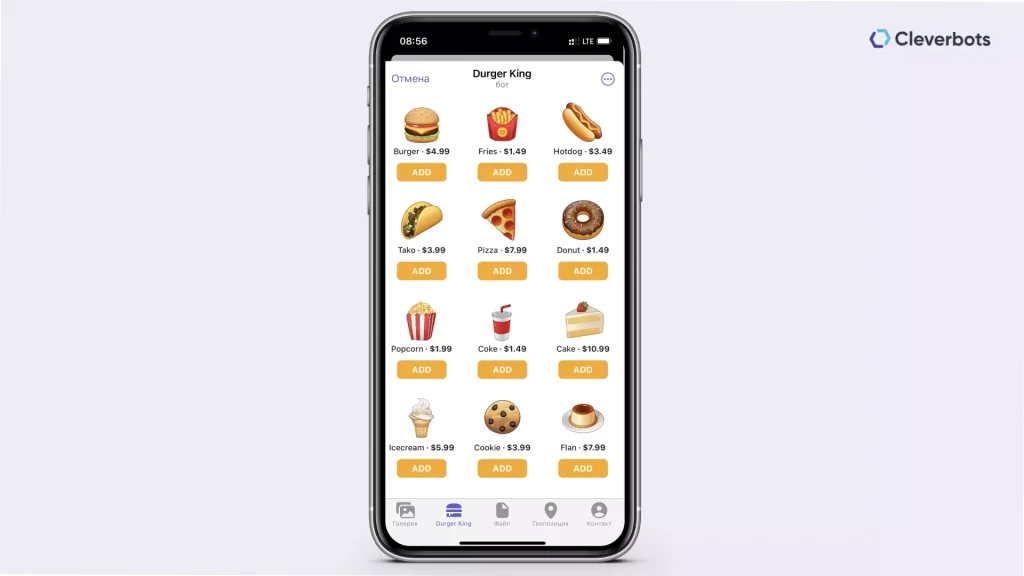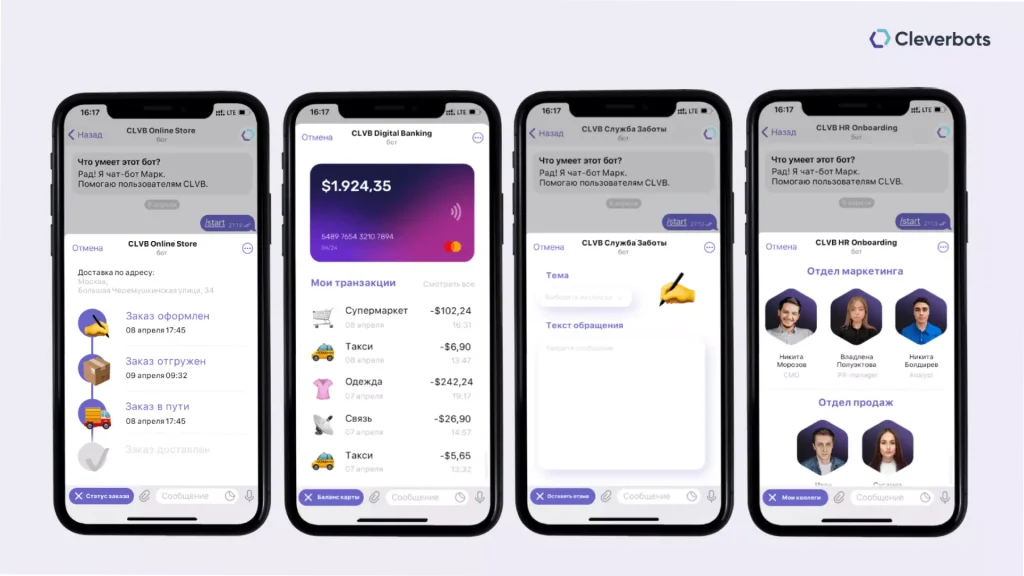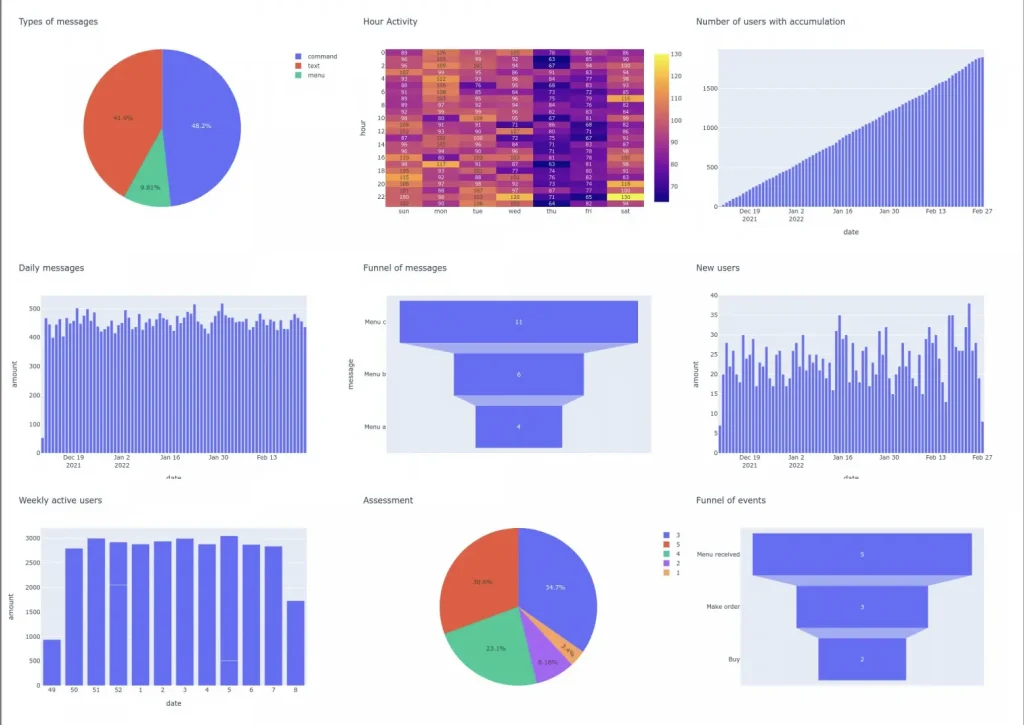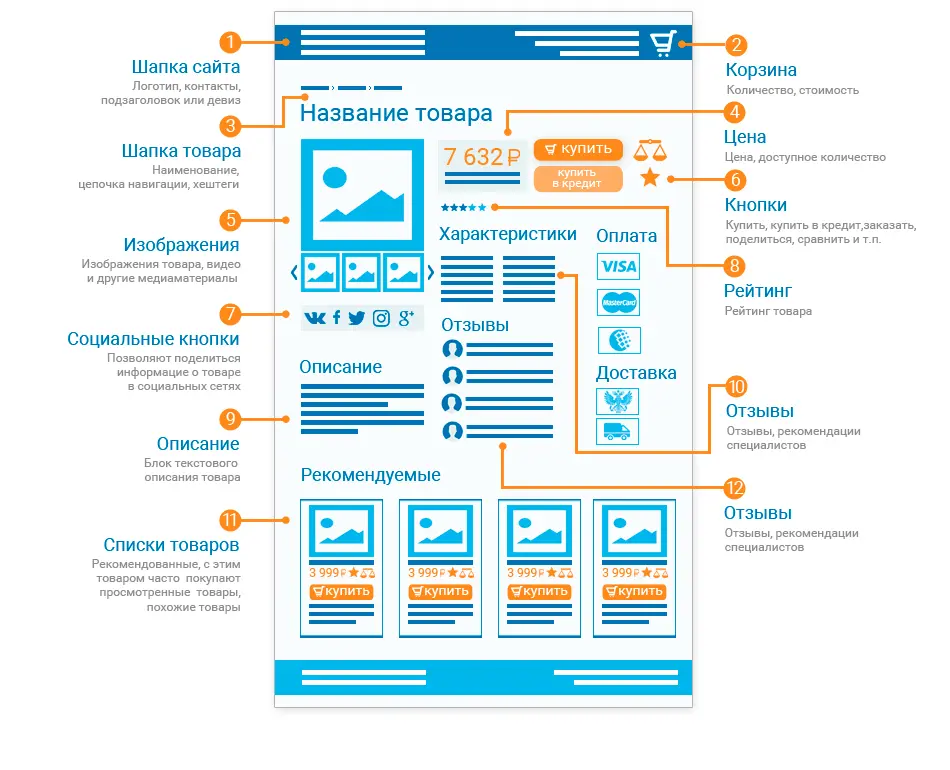Artificial intelligence technologies are currently at their peak, and chatbots are one of the most popular tools in this field. Chatbots are computer programs that can communicate with users via a chat interface. Currently, the most popular platform for creating chatbots is Telegram. Let's look at the capabilities of a Telegram bot for businesses and how to use it.
Why Business Needs Chatbots: Business Use Cases
Chatbots are a great tool for automating routine tasks and enabling more effective communication with clients. Bots can be used in a variety of industries, including restaurants, e-commerce, banking, tourism, healthcare, media, and more.
Examples of using chatbots in business:
- Customer communication: A chatbot can provide customers with information about a product or service, answer questions, accept orders, process payments, and more. This can significantly simplify customer interactions and reduce response times.
- Marketing: Chatbots can be used to send out news, promotions, special offers, etc. Bots can also collect customer data, allowing businesses to create more effective marketing strategies.
- Order processing: Chatbots can be used to automate the order processing process. The bot can help customers select products, process payment, and arrange delivery.
- Service and support: Bots can help customers solve problems, including technical ones, and provide advice.
What capabilities does the bot have for communicating with the client?
Telegram bots offer a number of options for effective communication with clients. While they can use text messages and voice messages, in business settings this can lead to decreased sales and customer dissatisfaction.
Telegram bots have already proven their effectiveness in various business sectors. For example, in the restaurant industry, chatbots are used to take orders and reserve tables, as well as organize food delivery. In the medical industry, bots can be used to schedule appointments and consultations with doctors, as well as to obtain information about medications and medical services.
One of the most promising areas for Telegram bots is e-commerce. Bots can be used to sell products, process orders, provide delivery status notifications, and perform other tasks related to online stores. Bots can also be used to conduct customer surveys and questionnaires to understand how to improve service and increase customer satisfaction.
Web 3.0 Update: What's Changed?
The Telegram Web 3.0 update brought a host of new features and improvements that made using Telegram bots for business even more effective. One of the key innovations is support for WebHooks. Developers can now create chatbots that interact with websites and apps.
WebHooks are a mechanism that allows a chatbot to automatically receive and process data from third-party web services. This opens up new opportunities for businesses, as it's now possible to create bots that can automatically process orders, payments, and other actions performed on a website or app.
Additionally, Telegram Web 3.0 includes support for carousels, allowing developers to create more interactive bots. Carousels are horizontal lists of items that users can swipe through. This opens up new possibilities for creating e-commerce bots that showcase products, promotions, and other offers.
Another important innovation is support for Telegram bots within group chats. Users can now use bots without leaving the chat, making communication more efficient.
The Telegram Web 3.0 update also adds support for voice and video messages, making it possible to create bots that can communicate with customers in real time.
Overall, Telegram Web 3.0 provides more opportunities for developing chatbots, making them more effective for business use.


Prospects: How to use Telegram bots for specific business segments
Telegram bots hold enormous potential for various types of businesses. In this section, we'll explore the opportunities they offer for specific business segments.
E-commerce
Telegram bots are already being successfully used in e-commerce. Bots help automate sales processes, simplifying the interaction between sellers and buyers. For example, a Telegram bot can be used to create a store, accept orders, and answer customer questions in real time. The bot can also send notifications about new products and offers, increasing customer loyalty.
Tourism
Telegram bots can be useful in tourism for organizing trips and providing customer convenience. For example, a bot can help with tour selection, payment, and booking tickets, as well as providing information about vacation spots and attractions.
Finance
Telegram bots can also be used in banking and finance. Bots can help customers obtain information about banking services and products, as well as conduct financial transactions, such as paying bills or making money transfers.
Medicine
In the medical field, Telegram bots can help patients receive information about illnesses, medications, and medical services, as well as schedule appointments. The bot can also help patients track their medications and provide reminders about scheduled procedures.
Education
Telegram bots can help in the educational field by providing information about courses and trainings, as well as helping students register for classes, providing schedules, and information about instructors.
HR
Telegram bots can be useful tools for HR departments in the recruiting and selection process. For example, a bot can help automate preliminary interviews by asking standard questions and collecting information about candidates. The bot can also answer typical candidate questions about job openings, salaries, and company benefits, which can significantly reduce the time spent processing inquiries.
Marketing and sales departments can use Telegram bots to automate the sales process and increase conversion. For example, a bot can answer potential customers' questions, recommend products or services, send price lists and promotions, and collect customer contact information for follow-up.
For banks and financial institutions, Telegram bots can help streamline customer service and improve customer satisfaction. Bots can answer questions about products and services, help select the best tariff, provide information about ATMs and branches, and facilitate transfers and payments.
Overall, Telegram bots can be useful tools for automating a number of business processes and improving customer service. However, to successfully implement Telegram bots in specific business segments, their functionality must be carefully considered, taking into account the characteristics and needs of the target audience. It's also crucial to devote sufficient attention to bot training and monitoring to ensure high-quality and effective customer service.
Bot analytics
To effectively use Telegram bots in business, it's necessary to monitor their performance and collect analytics. Telegram provides an API for working with bots and collecting statistics. This allows you to analyze user behavior, message volume, bot feature usage statistics, and much more. This information can be used to improve bot performance and optimize business processes.

Conclusion
Telegram bots are a powerful tool for communicating with customers and automating business processes. They can be used in various business sectors and help improve service and customer satisfaction. When developing a Telegram bot, it's important to consider the specifics of your business and customer needs to create the most effective tool. It's also important to monitor the bot's performance and collect analytics to continually improve its performance and increase efficiency.







